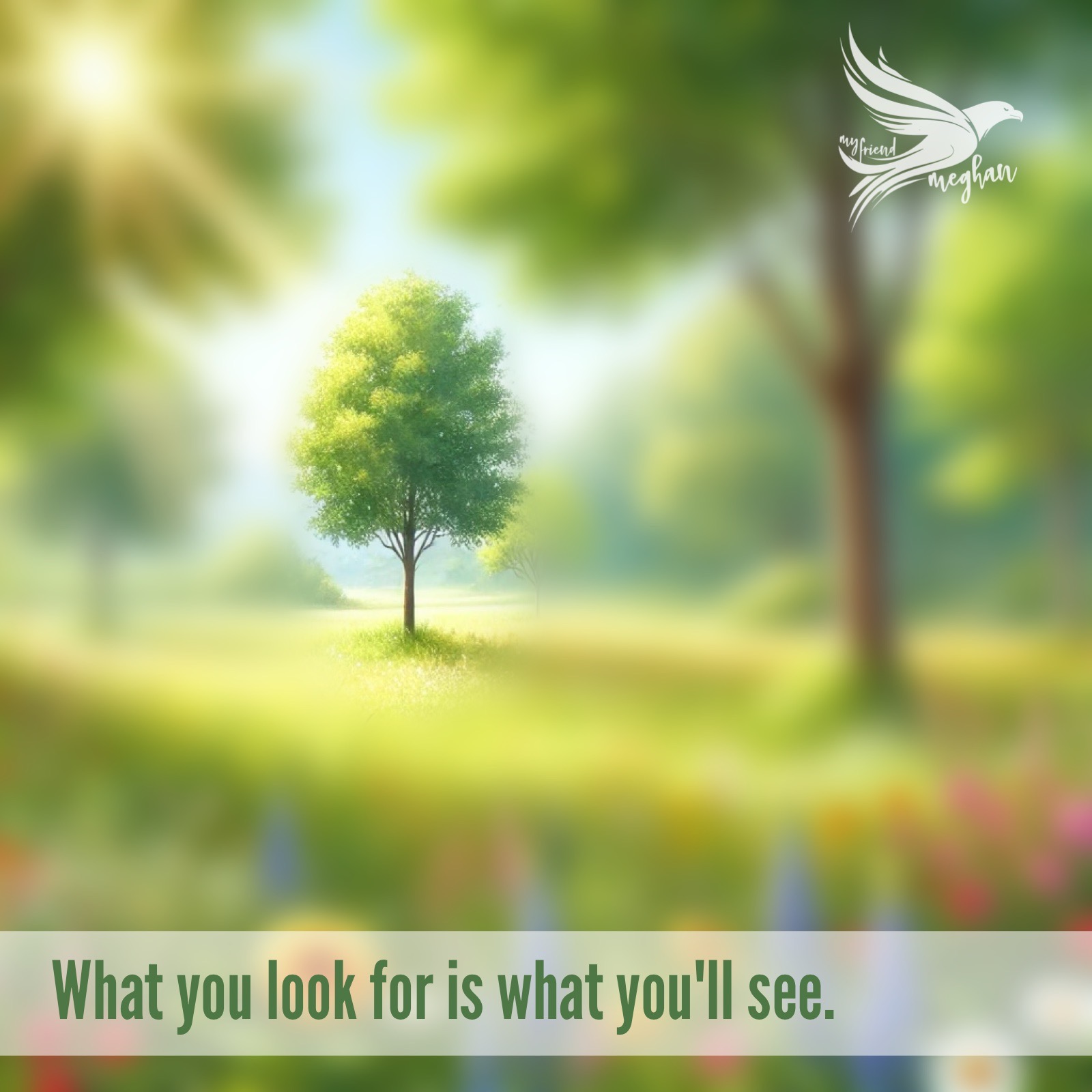What you look for is what you’ll see.
It’s incredible how quickly our minds make meaning from what we choose to notice. This isn’t just a personal observation—it’s something psychology has backed for decades. The Pygmalion effect, for instance, illustrates how our expectations can shape outcomes, particularly when it comes to how we perceive and treat others. It’s a form of self-fulfilling prophecy, where what we anticipate begins to subtly guide our focus, our behavior, and ultimately our experience. What we focus on starts to color everything we see, and over time, that perception begins to feel like truth.
If you’ve followed me for any length of time, you’ve probably heard me say, “What you focus on, you make room for.” It’s a phrase I come back to often because it holds so much truth. What you give your attention to begins to expand—sometimes subtly, sometimes dramatically. That’s why a small shift in focus can end up transforming your entire experience.
An Object Lesson
I was reminded of this recently when listening to Tony Robbins in an interview where he offered a powerful example of this concept. He invited the interviewer to look around the room and notice everything brown. After closing his eyes, Tony then asked him to recall everything that was red. Unsurprisingly, he struggled—because he hadn’t been looking for red. But when Tony asked him to open his eyes and search for red specifically, it suddenly stood out everywhere. And here’s the kicker: Tony noted that people will even call burgundy “red” or “beige” brown just to feel successful in their search.
It’s a light-hearted example with a profound truth: once your focus is set, you’ll find what matches it—even if it’s a stretch.
Rewriting Our Internal Stories
This is a striking example of confirmation bias—the tendency to seek, interpret, and remember information that aligns with our beliefs. It’s not about objective truth; it’s about perception. And perception, when repeated, begins to feel like fact. This is how the stories we tell ourselves become the lens through which we view the world.
When we believe something strongly enough—whether it’s “I’m not good enough” or “Life supports me”—we subconsciously scan our environment for proof. And we’ll find it, even if we have to call a burgundy chair “red” just to do so. Over time, this habitual focus wires our brain to expect that outcome again and again. It creates a loop: what we expect, we look for. What we look for, we find. What we find, we reinforce.
Intentional Focus
That’s why intentional focus is so powerful. It’s not about ignoring reality but choosing which part of it you want to magnify. If you look for kindness, you’ll see more of it. If you expect beauty, you’ll notice things others might overlook. And if you’re in a tough moment, shifting your focus to curiosity instead of judgment can completely transform the experience—something I explored more deeply in this reflection on assuming positive intent.
Focus isn’t just about attention; it’s a tool for shaping your lived experience. By choosing what to look for, you begin to color your perception—and that colors your life.
Actionable Insights
- Become aware of what you’re scanning for. Are you expecting things to go wrong or watching for signs of disappointment? Gently notice your mental default settings. What “color” are you tuned to?
- Intentionally shift your focus. Pick one quality—like love, gratitude, or beauty—and practice looking for it all day. See what you notice when you actively seek that color in your surroundings.
- Challenge what you think is “true.” Ask yourself, “Am I seeing this clearly, or am I calling burgundy red just to match my expectations?” This question invites honesty without judgment.
- Practice curiosity over judgment. When something catches your attention, pause and explore it with curiosity. What story am I telling myself about this? Is there another way to see it?


Leave a Reply